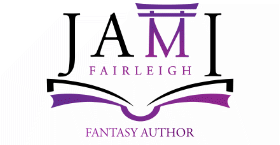
How the Story Grid Editing Method Almost Killed My Book

Last year, I decided that Editing is the worst part of writing. Writing 120,000 words into a believable tale took 1-3 hours a day for 80 days. Editing the same book took all year. Oh, wait, no, it’s still not done. And finishing my book didn’t even percolate to the top of my New Year’s resolutions. The monster manuscript was heading perilously close to the Trunk of Unfinished Works (if you have no idea what that means, let me Google that for you).
The other day, my Facebook account reminded me that I had finished draft one of my book on January 3, 2018. Yes, that would be more than one year ago. With some effort and more than a little whining, I read it, made some small edits and polished it into a workable second draft by late February.
Fast forward to March when Draft 2 was sent to Kim Kessler for a Story-Grid style developmental editing session. She turned it around in a few speedy weeks and then it was my turn to Story Grid spreadsheet my book. I tried, and I struggled, and I tried some more, and I wrote a short story and ignored my book, and then I tried some more and then I gave up.
So am I saying that no writer should use this methodology? No, certainly not. I’m sure that you used it and your story turned out brilliantly and it is now a best seller and you may even be awarded the Man Booker prize. Heck, I tried it because I can see the value in what the methodology provides. So why didn’t it work for me?
I know too much about story structure. Wow, how arrogant of me, right? No, let me explain. While I was waiting for an editor, I started reading books on story structure. While I was struggling with trying to spreadsheet my scenes with the story grid methodology, I’d procrastinate that work by reading about story structure. And while I was struggling to diagram my book, I was thinking about classic story structure.
What I think I knew then, but only just admitted out loud is that the structure of my novel didn’t work. I think I recognized that I had some serious flaws with how my story was composed and my inner critic was screaming to stop trying to improve individual scenes because ultimately, the entire story needs to be rewritten.
“When your story is ready for rewrite, cut it to the bone. Get rid of every ounce of excess fat. This is going to hurt; revising a story down to the bare essentials is always a little like murdering children, but it must be done.”
—Stephen King
The proponents of the Story Grid methodology will tell you that their process will help you identify problems so you can fix your work, then repeat the process again and again as needed until you have a final polished and workable story. But trying to use the methodology on a book that I knew didn’t work killed the project for me. Or did it?
I’m not yet ready to admit defeat on this book. No, I’m not going to force myself to continue spreadsheeting this broken draft. Instead, I think I’m going to go back to the basics and think about what should happen instead of thinking about what has happened. And then I’ll see where I’m at.
Have you had to admit that your project needs a major revision? How did that go for you?

2 thoughts on “How the Story Grid Editing Method Almost Killed My Book”